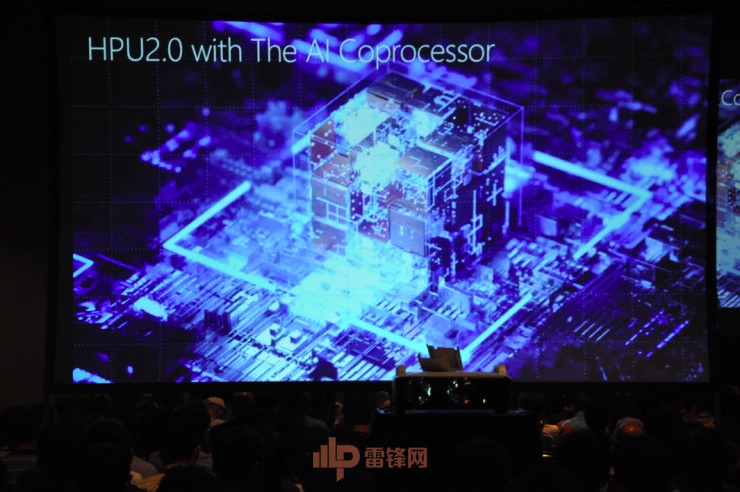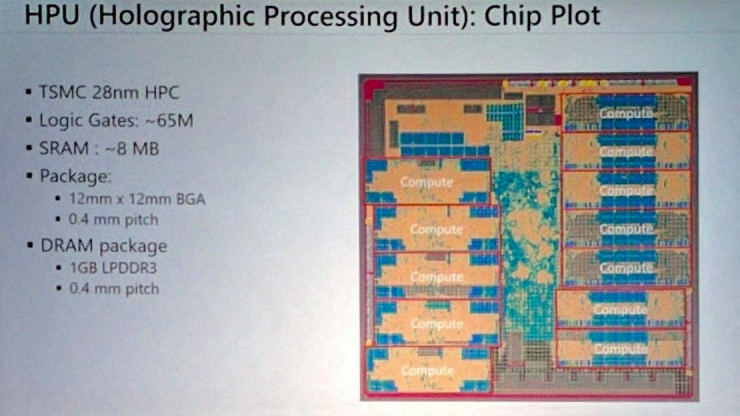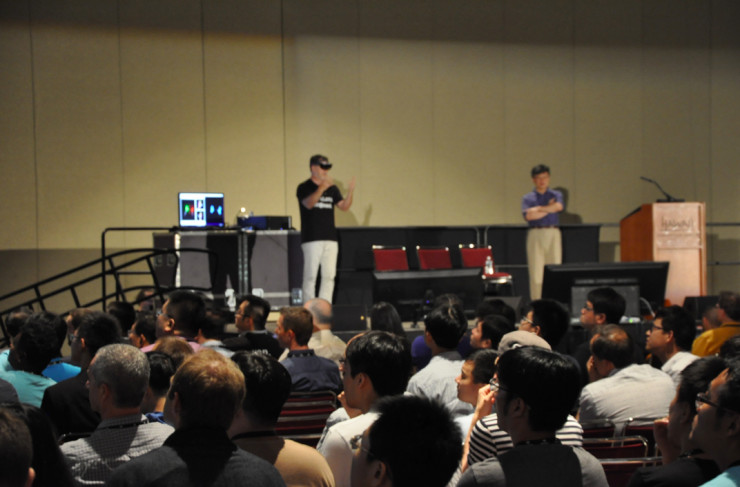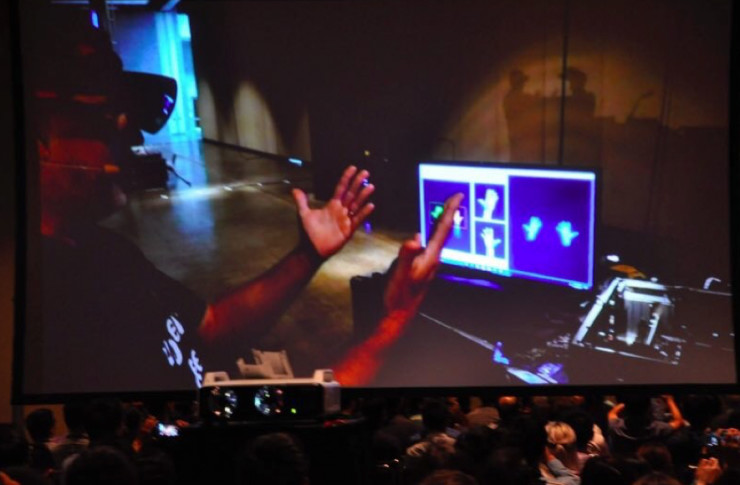Microsoft Develops AI Chip for Next Generation HoloLens to Recognize Speech and Image
(Original title: Microsoft develops AI chips for next-generation HoloLens, recognizing voice and images)
With regard to the next-generation HoloLens, Microsoft finally revealed some news: The AI ​​chip is being developed to recognize speech and images.
 Lei Feng Network (public number: Lei Feng network) was taken on CVPR site
Lei Feng Network (public number: Lei Feng network) was taken on CVPR site
Recently, at the CVPR conference held in Hawaii, Microsoft announced that they are developing new AI chips for HoloLens so that the device can directly recognize what the user sees and hears the sound. When the data is sent back to the cloud, it will not produce any more. More delays.
According to Lei Fengnet, the second generation of Microsoft Holographic Processing Unit (HPU, holographic processor) is under development and will be used for the next-generation HoloLens, but no specific time has been given.
The last time Microsoft announced the Hololens holographic processor was August 2016. The first-generation HPU chip is a 28-nm digital signal processor (DSP) customized by TSMC's TSMC OEM. It has 24 Tensilica DSP cores and processes 1 trillion instructions per second, 8MB of SRAM, and 1GB of LPDDR3 memory. The HPU chip is also available in a 12 x 12 mm BGA package, which performs 200 times faster and 10W lower power than a software-based solution.

HPU II has not given detailed information at present and believes it is stronger than the previous generation.
What did Microsoft say in CVPR?

In addition, at the CVPR conference, Shen Xiangyang, executive vice president of Microsoft and head of Microsoft's artificial intelligence and research division, delivered a speech entitled "Commercialization of Computer Vision: Success Stories and Lessons Learned."
Shen Xiangyang stated that Microsoft has always been committed to developing new computer vision technologies and giving them to developers to use them to build products. He briefly introduced the Microsoft Research Institute's computer vision research for 25 years. At the same time, he mentioned their latest research in computer graphics, image recognition, and other areas. Afterwards, they discussed in detail some of their commercialization cases.
Among them, Shen Xiangyang mainly talked about three products: Microsoft Pix (an AI-based camera APP), HoloLens (MR glasses) and Cognitive Services (cognitive services, can create AI-based on different platforms through a few lines of code application).

At the scene, Shen Xiangyang demonstrated IRIS Interactive Vision Learning Service, which allows developers to create image recognition applications. He also used HoloLens to demonstrate the latest demos, including Holoportation. This feature can rebuild high-quality portrait 3D images and send them to any place in real time.
However, ahead of editor Lei Fengwang said that in addition to publishing the second generation of HPU information, the marketing of the entire speech was rather heavy, and many people left midway.
Everything for AI
This is one of the few times that Microsoft decided to develop new chips. They claim that this is the first chip designed for mobile devices. In fact, in order to release more AI energy, many large companies have decided to develop their own chips. In May, informed sources said that Apple is testing the iPhone prototype, which uses chips designed for AI. Google launched the second generation AI chip TPU at this year's I/O conference. To persuade people to buy next-generation devices—whether mobile phones, VR helmets, or even cars—all experience will be better and smoother.
"What consumers expect is a real-time processing experience without delay," said Jim McGregor, an analyst at Tirias Research Institute. "For auto-driving cars, send data to the cloud and make decisions to avoid collisions and avoid pedestrians." This time delay you can't afford. The data generated by automatic driving is very large, you can not all the data back to the cloud." He said that by 2025, all people will interact with the equipment will be implanted in AI.
Over the past few years, Intel has occupied an important position in the chip market, but with the development of artificial intelligence, traditional chip manufacturers have begun to face competition for the first time. Through the analysis and learning model, simulation of human brain neural network, AI ability is becoming stronger and stronger. The chips that are typically used in PCs do not increase processing power several times at once, but this is what AI software requires.
At present, Microsoft has been developing its own chips for several years. Among them, the Xbox game console also joins the motion tracking processing system. Recently, in order to collaborate with Google and Amazon on cloud services, Microsoft has used Field Programmable Gate Arrays (FPGAs) to showcase their AI capabilities. In particular, Microsoft purchased chips from Altera, an Intel subsidiary, and used software to adjust the chips to make them unique.
Last year, Microsoft used thousands of such chips and translated English wikipedia into Spanish in one go. There are 5 million articles and 3 billion words in less than one tenth of a second. In the next step, Microsoft will let its cloud users use such chips to accelerate their AI missions. This service will be launched next year. Users can use this service to identify images from huge data, or use machine learning algorithms to predict the user's buying patterns. Doug Burger, a distinguished engineer at Microsoft Research, said, "We take this very seriously. Our wish is to become the largest AI cloud."
Of course, Microsoft also faces a lot of competition. Amazon also uses programmable gate arrays and plans to use the top chip Volta, developed by Nvidia, to train AI systems. At the same time, Google has established an AI processor called Tensor Processing Units and it is already available to customers. The cost of the company's content research and development chip is very large, but Microsoft said that they have no choice, because the technology changes so quickly that it can easily be left behind.
Putting professional stuff from the cloud into the hands of people or devices on the face is the top priority for Microsoft CEO Satya Nadella to focus on AI. In a speech in May, he talked about the idea of ​​using AI to track industrial equipment, AI can tell users where to find a Keiko, how to use it, and give timely warning in case of unauthorized use or chemical leakage. .
The new HoloLens chip will probably make this happen and create more possibilities. Microsoft’s CTO Kevin Scott said, “We do need to customize the chips for the scenarios and applications we are creating.â€
3 In 1 Charger,3 In 1 Charging Station,3 In 1 Wireless Charger,3 In 1 Apple Charging Station
wzc , https://www.dg-wzc.com